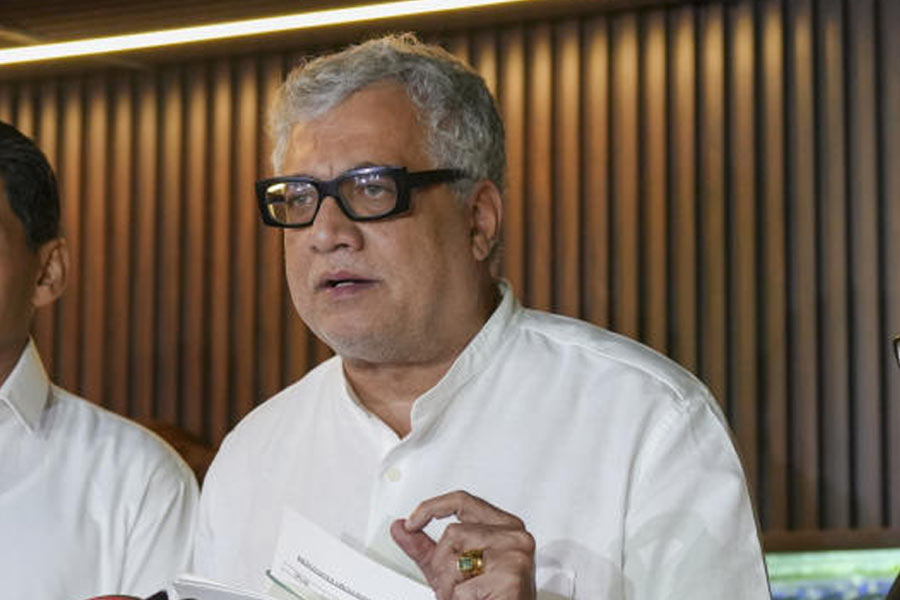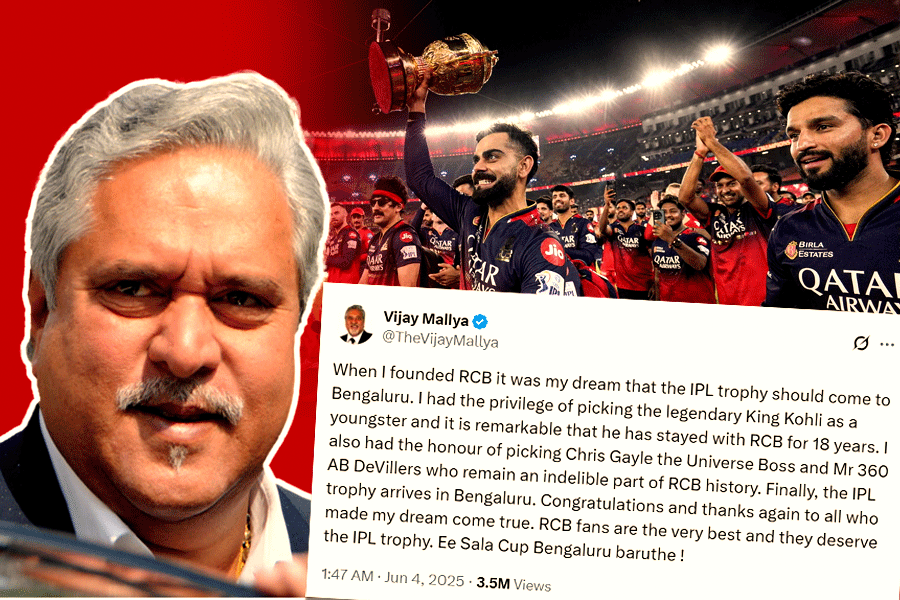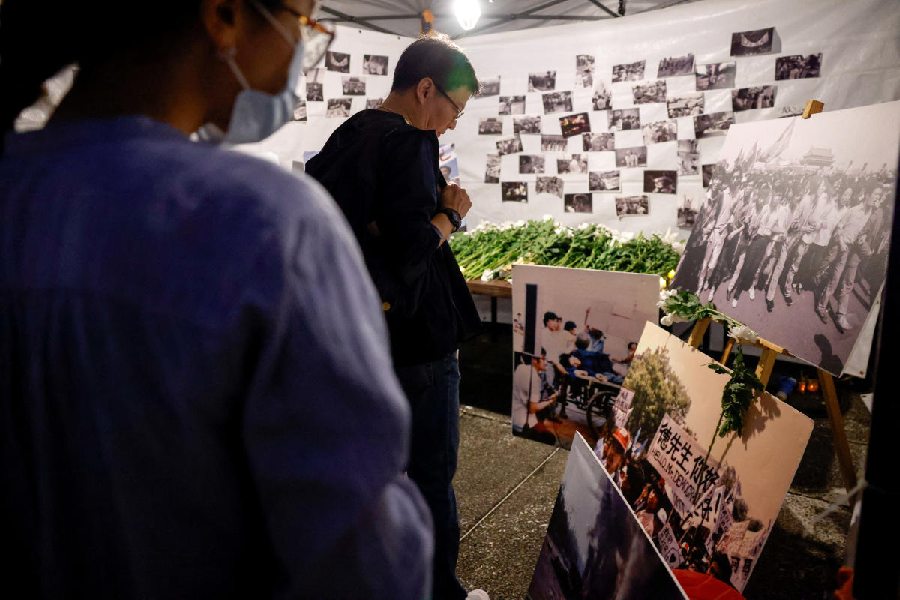Real story behind Phoolan's death
Author Mala Sen has returned from a research trip to India determined not to let up over the death of her friend, Phoolan Devi, who was shot dead at her MP's home in Asoka Road, New Delhi, on July 25 last year.
Mala, who immortalised Phoolan in her book, Bandit Queen, and later wrote the screenplay of the film, has little doubt that there has been a political cover up. Three people, alleged to be the assassins, are in custody, she acknowledges, but the investigation is no nearer establishing who recruited them.
She is not naming the culprits but she wants the investigation to focus on Phoolan's husband, Umed Singh, and on Mulayum Singh Yadav's Samajwadi party. The one thing Mala rules out is that Phoolan was a victim of a revenge killing by the residents of the village of Behmai.
'Behmai is a very poor village,' she argues. 'They could not hire that kind of people with the machinery and ability to get through tight police cordons. The centre of Delhi is almost like a police state these days.'
Both Mala and Phoolan's lawyer, Kamini Jaiswal, believe there has been a 'political conspiracy'. Before her death, Phoolan told Kamini and Mala that she intended to disinherit and divorce her husband but that she would do so only after the elections in UP. 'But these wills and documents were never drawn up and signed. Her husband played a very phoney game after her death because I knew of their private relationship,' says Mala.
On the political front, the second time MP 'was disenchanted with Mulayum Singh Yadav's Samajwadi party and was thinking of crossing the floor and joining the BJP. I just ask the general questions, 'Who killed Phoolan Devi? Who was paid? What was it about?' I think that Umed Singh and Mulayum Singh Yadav's party have a lot to answer for. Until they are deeply investigated and answers found, I will not feel justice has been done.'
Mala has one criticism of the Indian press. 'The anniversary of her death was, more or less, ignored in the press,' she claims. 'My criticism of the Indian press, which I admire greatly on the whole, is that it does not follow stories through. Perhaps that is because we have so much tragedy in India. We have had Gujarat, we have had Kashmir. I suppose they say, 'What is the death of one woman worth?' '
After Bandit Queen and Death of Fire, Mala had moved on to her third book. It's on AIDS, built round the experiences of three Indians, including a close friend. But the BBC rang her to seek her comments on the death by burning of Kuttu Bai, a 65-year-old widow, in the village of Tamoli in Madhya Pradesh. Without wishing it to be so, Mala has become the BBC's suttee specialist.
Stumped
Let's get one thing straight. Young Parthiv Patel, who has captured the hearts of the cricket loving public in England, did not need 'a note from his mum' to allow him to stand up to the wicket without a helmet, as some commentators (jokingly) have suggested. In my office, work came to a halt as Parthiv fended off the closing overs to see India through to safety in the second Test at Trent Bridge.
'He doesn't look 17,' said an incredulous colleague, 'more like 14.' The England Cricket Board advises young people to wear helmets when there is risk of injury but in First Class cricket, it is not compulsory, according to Andrew Walpole, the ECB's media relations manager whom I consulted. 'We issue guidelines to schools and clubs on the use of helmets in recreational cricket and the advice is that wicket-keepers under the age of 18 should wear a helmet if they are standing up,' says Walpole. 'These guidelines do not apply to First Class cricket as professional players are covered against injury by insurance schemes.'
He adds: 'It's left to the individual professional's discretion and while Parthiv didn't wear one on this occasion, remember it was a flat pitch and we have seen other professional keepers wearing helmets to stand up more frequently in the First Class game.'
If it were left to the commentators, Parthiv would now take precedence over Ajay Ratra as India's main keeper. Colin Bateman in the Daily Express commended Parthiv for 'showing all the maturity you might expect from someone who was made captain of his country's under-19 team at the age of 16'.
And in The Daily Telegraph, Derek Pringle concurred by saying that 'great credit must go to Parthiv Patel'. In the Daily Mail, Mike Dickson was also taken with the 'Pint-sized Patel', who, he pointed out, 'is not old enough to buy a drink' in a pub but 'showed remarkable calm under pressure'.
In The Times, Christopher Martin-Jenkins noted: 'He is shorter than Sachin Tendulkar, not much higher than the stumps and he was playing in only his ninth First Class match but showed courage, coolness and excellent technique to keep a tiring England attack at bay.'
It is worth recalling that Tendulkar was also 17 when he scored his first century on his debut tour of England and saved India.
Cow craze
London looks as though it has been raining cows. In squares, pavements and even the floor of the Stock Exchange, no fewer than 150 cows have appeared as though by magic. Actually, the cows have given the city quite an Indian look since we are used to having the animals wandering around in the busiest of streets.
The idea of dotting a city with fibreglass cows, painted in bright colours by local artists, was first conceived of in Zurich in 1998 by a company called CowParade Holdings AG. The following year, Chicago followed and a few weeks ago the cow craze hit London. At first, it seemed the whole thing was a BJP plot to Hinduise Britain but such suspicions proved unworthy.
On October 10, the cows are to be auctioned off by Sotheby's to raise money for ChildLine, a children's charity, at about £5,000 a time. It now seems ironic that so much of what we considered irritating back in India - such as cows and rickshaws holding up traffic in town - brings a soothing touch to
London.
The cows have planning permission to be in London for only 12 weeks. There are several cows near my office in Canary Wharf but the one I like best
is a friendly white one resting in the shade of a tree. I will be sorry to
see it go.
Ray's summer
The number of people who come to the National Film Theatre per month totals 10,000 on average. In July, the figure doubled to 20,000. Such is the pulling power of the Satyajit Ray season, which has been advertised at Waterloo and many other London underground stations with posters depicting an image of the Bangladeshi actress, Babita, from Ashani Sanket (Distant Thunder). The Ray films have flushed out London's Bengalis in big numbers. Normally, they are happy to stay at home and leave the noisier and altogether more determined Punjabis to dominate the arts scene. Almost the best thing about the Ray films is that they do not have Bhangra.
Tittle tattle
In Jeffrey Archer's forthcoming novel, Sons of Fortune, there is a little touch of the Hindi film, Amar Akbar Anthony, which tells the story of three brothers who are separated in childhood. Archer, who is serving a four-year prison term for perjury, has been dropped by HarperCollins, his old publishers. But he has been picked up by Macmillan, with whom he has signed a £11 million deal for his next three books.
Sons of Fortune will trace the tale of twin boys who are separated at birth and grow up without knowing about each other. Archer will be released in time to promote the paperback version of his novel. However, real life is a lot more dramatic than even Archer's fiction.
A white mother recently gave birth in an IVF clinic to black twins after her eggs were fertilised in error from sperm donated by a black man. Now, a judge will have to decide whether the twins are retained by the mother or handed over to the black man, who has been shown by DNA testing to be their biological father.
 Wednesday, 04 June 2025
Wednesday, 04 June 2025










